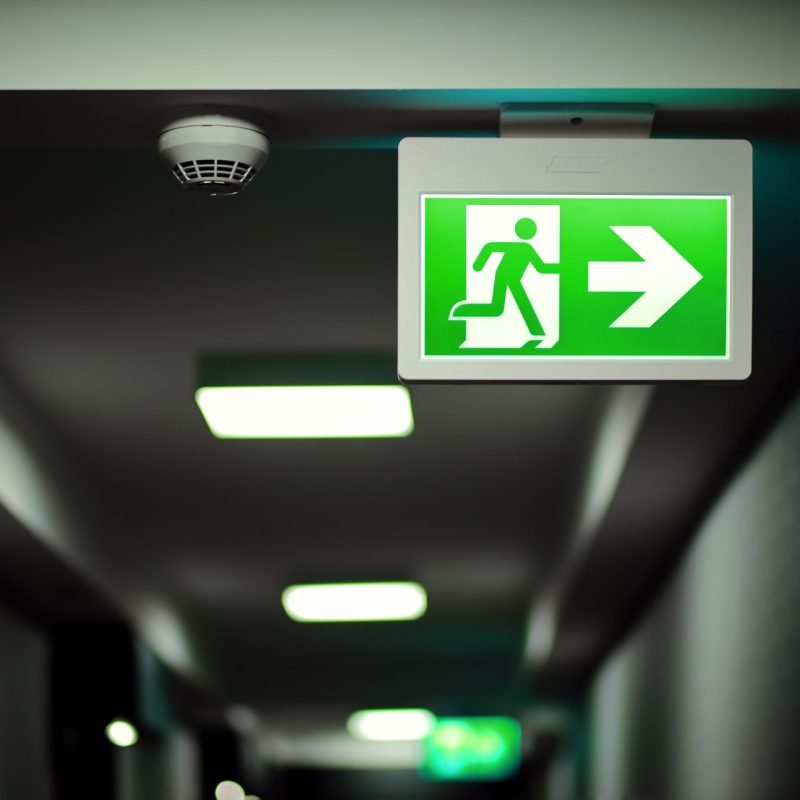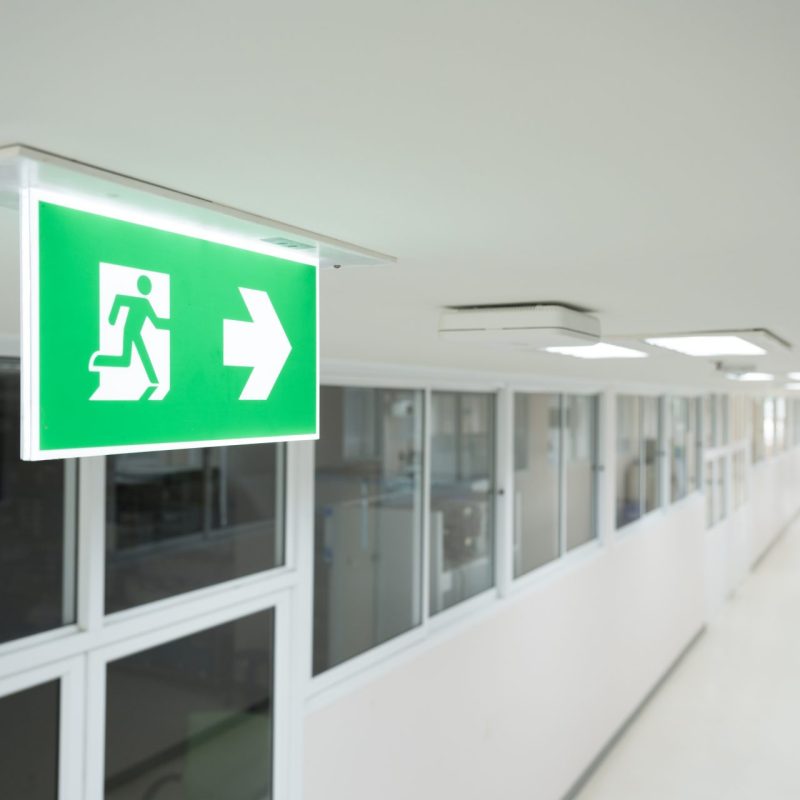Emergency lighting is a legal requirement for all commercial and public buildings following risk assessments. This system is composed of devices that provide lighting when regular lighting has stopped working due to either faults or an emergency.
Emergency lights are self contained units that are wired into the mains, but have the benefit of battery backup. There are different types of lights that you can have installed in your commercial building. These are normally split into either standby lighting or emergency escape lighting.
In the event of failure of normal lighting supply, standby lighting will illuminate different areas to enable activities to be carried out as normal. Emergency escape lights, however, are there to lead people to safety during an emergency, such as fire or natural disasters.
There are three types of emergency lighting:
Escape route lighting, which light up emergency exits, such as doors, stairs and halls, during an evacuation. Escape lighting can also lead staff to areas where there may be fire extinguishers and other emergency equipment; Open area lighting, also known as anti-panic lighting, helps light up large spaces within the building to keep individuals calm and lead them safely to emergency exits; High-risk area task lighting, which should be strategically placed within areas where risky activities take place in the building.






